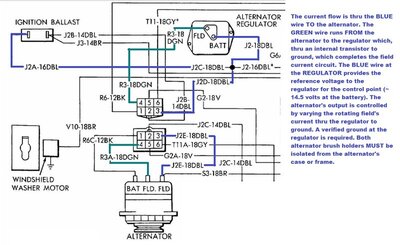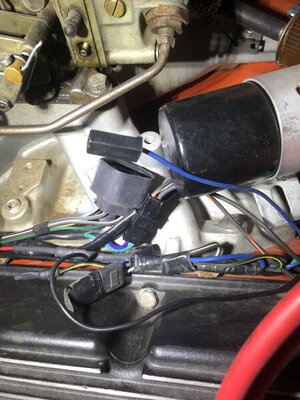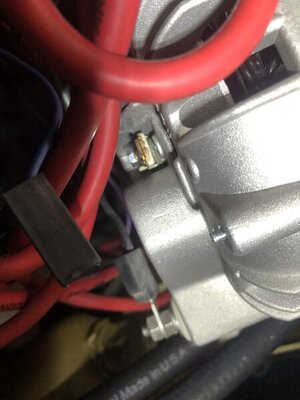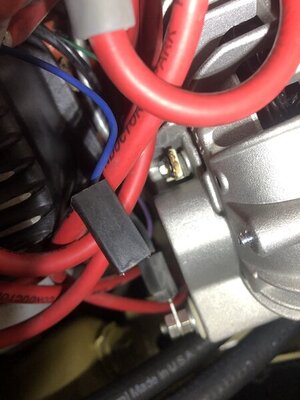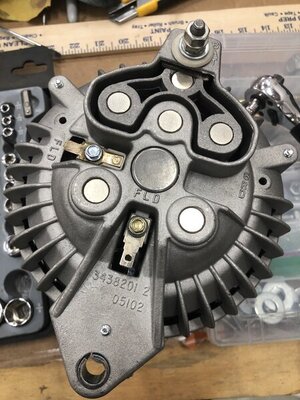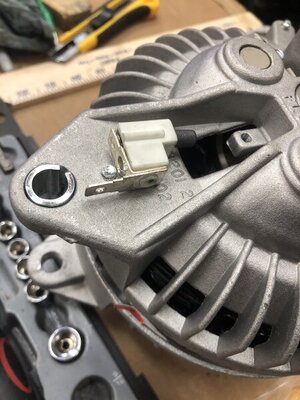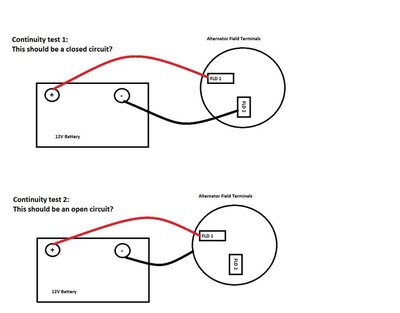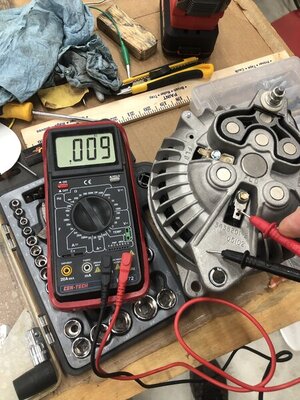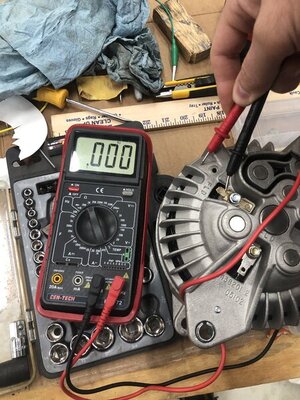IMO.....you are checking correctly. As previously mentioned, it may be possible that the rotor is grounded internally, at the slip ring assembly (the part that the brushes contact and rotates). You might try removing one brush holder assembly then performing the resistance test on the remaining brush holder assembly to try and isolate which brush holder assembly may be grounded.
If you cannot isolate which brush holder(s) may be defective, return the unit to the place of purchase and explain your circumstances. And request they test it or exchange It for a tested unit (by them), maintaining that BOTH field connection MUST BE ISOLATED (NOT GROUNDED) FROM THE CASE. Just my opinion......
BOB RENTON

